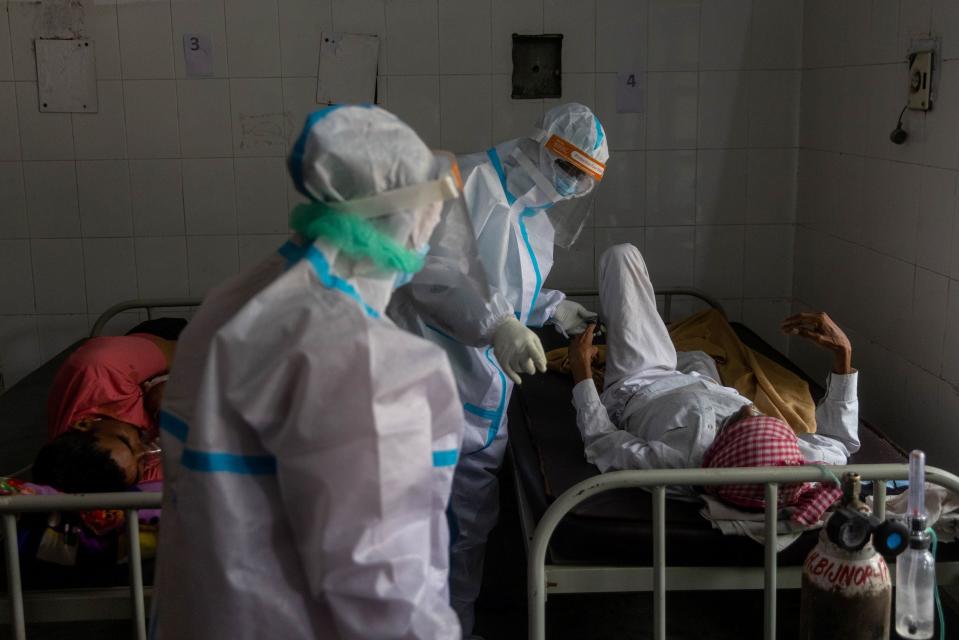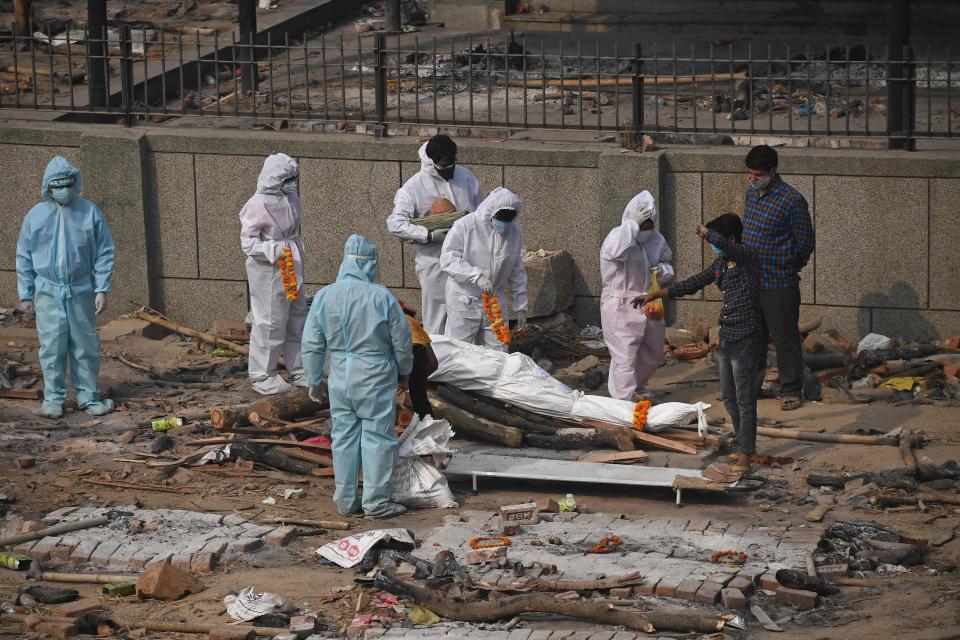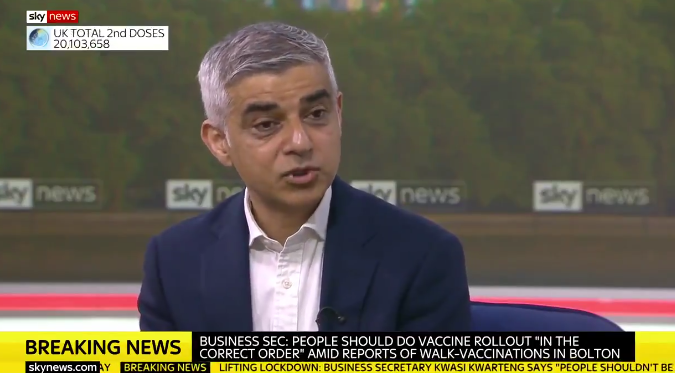India’s Covid cases fall as WHO chief warns positivity remains ‘ominously high’

Medics tend to a man with breathing problems inside a Covid-19 ward in Bijnor district, Uttar Pradesh
(Reuters)India’s new coronavirus cases have fallen dramatically, but with daily deaths still above 4,000 experts warned the data was unreliable with the country struggling to test enough people in rural areas.
The country has been hit hardest by the pandemic in recent months as a new strain of the virus fuelled a surge in infections that has risen to more than 400,000 daily.
Scores of bodies have been seen washing up on the banks of the Ganges amid a shortage of wood for Hindu cremations - another grim sign of the awful crisis in the world’s second most populous country.
Lacking beds, drugs and medical oxygen, hospitals have been forced to turn away droves of sufferers, while tales of desperate relatives searching for someone to treat dying loved ones have become commonplace.

Having begun to decline last week, new infections over the past 24 hours were put at 281,386 by the health ministry on Monday, dropping below 300,000 for the first time since April 21 but experts insisted the peak was not over.
Some experts estimate the true number of cases and deaths could be five to ten times higher than official reports.
Total deaths in India are currently at 274,390.
“There are still many parts of the country which have not yet experienced the peak, they are still going up,” World Health Organization Chief Scientist Soumya Swaminathan was quoted as saying in the Hindu newspaper.
Swaminathan pointed to the “very high” national positivity rate, at about 20per cent of tests conducted, as a sign that there could be worse to come.
“Testing is still inadequate in a large number of states. And when you see high test positivity rates, clearly we are not testing enough.
“And so the absolute numbers actually don’t mean anything when they are taken just by themselves; they have to be taken in the context of how much testing is done, and test positivity rate.”

At the current rate India’s total caseload since the epidemic struck a year ago should pass the 25 million mark in the next couple of days. Total deaths were put at 274,390.
“This drop in confirmed COVID cases in India is an illusion,” S. Vincent Rajkumar, a professor of medicine at the Mayo Clinic in the United States, said on Twitter.
“First, due to limited testing, the total number of cases is a huge underestimate. Second, confirmed cases can only occur where you can confirm: the urban areas. Rural areas are not getting counted.”
At least 20,000 passengers were allowed to enter the UK while Boris Johnson delayed imposing a travel ban from India, it was revealed.
The prime minister added India to the “red list” only on April 23, three weeks after announcing a ban on flights from Pakistan and Bangladesh.
Sadiq Khan revealed that five London boroughs would have to undertake surge testing after cases of the virulent strain were discovered.

But Kwasi Kwarteng defended the Government’s timing saying he was “very confident” vaccines would protect against the variant first discovered in the South Asian country.
Asked whether the UK was “too slow” to close its borders to India, the Business Secretary told LBC radio: “I don’t think we were.
“India was put on the red list on April 23 – before the variant was even identified we could see that there was something wrong.
“And even if you arrived from India before April 23, you had to have a quarantine and there were measures in place to restrict the danger.
“It is easy with hindsight to say things could have been better or quicker and all the rest of it, but I think there was a balanced approach.
“I think April 23 was fairly early – a month ago nearly – and we’ve managed to contain this variant, partly – principally actually – because of the rollout.
“The rollout has been very successful, something like 36 million people so far have had the first dose, 20 million have had two doses, and we are very confident that the vaccination will deal with the Indian variant as it has done with other variants of coronavirus.”
Read More
Wales’s youth say equality for women is ‘more than a hashtag’ in annual message
Hancock voices frustration over Covid vaccine refusals
India and Pakistan cricketers approved entry for England tours

 Yahoo Sport
Yahoo Sport 





































